
Fatty liver disease affects many people worldwide. It happens when too much fat builds up in the liver cells. This can lead to health problems if left untreated. A good diet is key to managing fatty liver and improving liver health.
I know that changing eating habits can be hard. But with the right recipes, it’s easier to stick to a liver-friendly diet. These 10 recipes are tasty, easy to make, and good for your liver. They use foods that may help reduce fat in the liver and boost overall health. By trying these dishes, you can take steps to care for your liver while enjoying your meals.
1. Avocado and Lentil Salad

I love this tasty and nutritious salad that’s great for a fatty liver diet. It combines protein-rich lentils with creamy avocado for a satisfying meal.
This dish is quick and easy to make. I can whip it up in about 20 minutes, making it perfect for busy weeknights or lunch prep.
Here’s how I make it: First, I cook 1 cup of dried lentils in 3 cups of water for about 15-20 minutes until tender. While they’re cooking, I dice 1 ripe avocado and chop some fresh herbs like parsley or cilantro.
Once the lentils are done, I drain and rinse them under cold water. Then I mix them with the diced avocado, herbs, and a simple dressing of lemon juice and olive oil.
I like to add some extras for flavor and crunch. Diced cucumbers, cherry tomatoes, or a sprinkle of pumpkin seeds work well. These add more nutrients without compromising the liver-friendly benefits of the main ingredients.
2. Turmeric-Spiced Quinoa
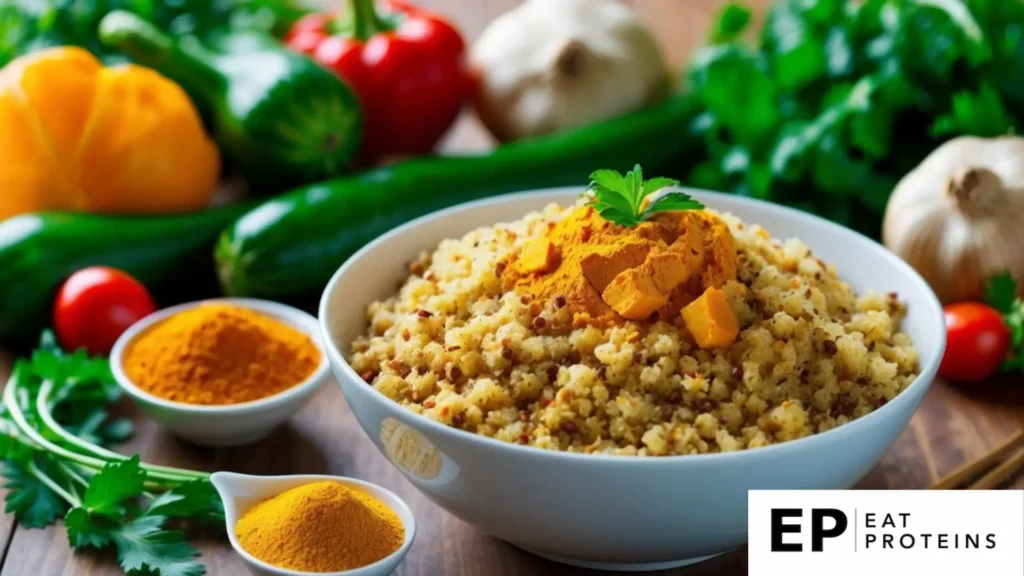
Turmeric-spiced quinoa is a tasty and healthy dish that’s great for a fatty liver diet. I love how it combines the goodness of quinoa with the benefits of turmeric.
Quinoa is a protein-rich grain that’s full of fiber. Turmeric is a spice known for its bright yellow color and potential health perks.
This recipe is easy to make. I start by rinsing 1 cup of quinoa. Then I add it to a pot with 2 cups of water and 1 teaspoon of turmeric powder.
I bring the mix to a boil, then lower the heat and let it simmer for about 15 minutes. After that, I turn off the heat and let it sit for 5 minutes.
Finally, I fluff the quinoa with a fork and it’s ready to eat. The whole process takes less than 30 minutes.
This dish is not only good for you, but it also tastes great. The turmeric gives the quinoa a nice flavor and a pretty golden color.
3. Baked Salmon with Asparagus
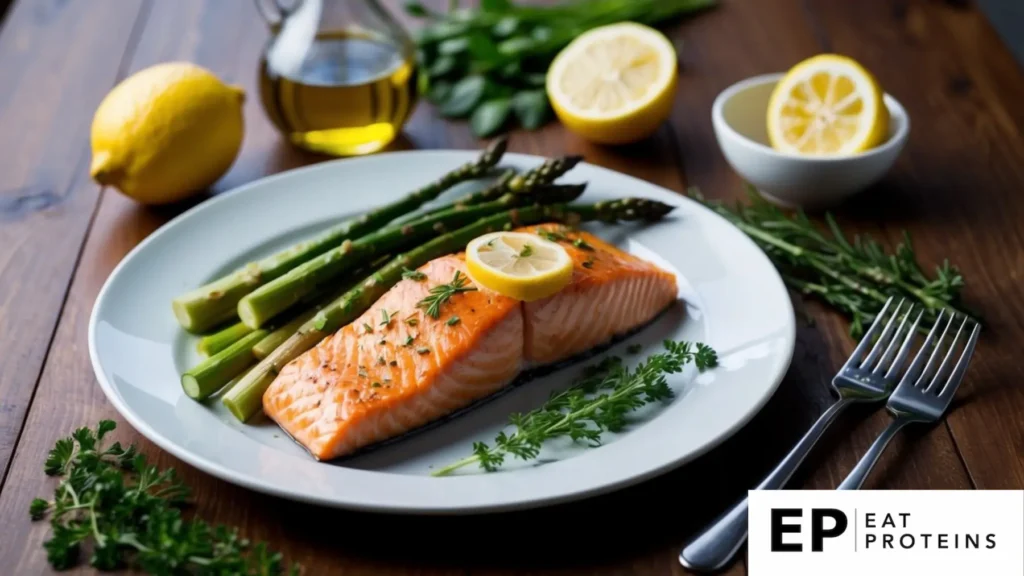
Baked salmon with asparagus is a nutritious meal that’s great for a fatty liver diet. I find it’s packed with omega-3 fatty acids and fiber, which can help improve liver health.
This dish is easy to make. I can prepare it in about 30 minutes, including prep time. It’s a simple one-pan meal that doesn’t require much cleanup.
To make it, I preheat the oven to 400°F (200°C). I place a 6-ounce salmon fillet on a baking sheet and surround it with 8-10 asparagus spears.
I season everything with a bit of olive oil, lemon juice, salt, and pepper. Then I bake it for 12-15 minutes, until the salmon flakes easily with a fork.
Salmon and asparagus are both good for liver health. The omega-3s in salmon can help reduce liver fat, while asparagus may support liver function.
I like to serve this dish with a side of brown rice or quinoa for a complete meal. It’s a tasty way to support liver health without sacrificing flavor.
4. Greek Yogurt with Berries

Greek yogurt with berries is a simple and tasty recipe for those with fatty liver. I find it’s an easy way to get protein and antioxidants in one dish.
To make this, I start with a cup of plain Greek yogurt. Greek yogurt has more protein than regular yogurt, which is good for liver health.
Next, I add about 1/2 cup of mixed berries. Blueberries, strawberries, and raspberries work well. Berries are rich in anthocyanins, which may help improve fatty liver.
I sometimes add a drizzle of honey for sweetness, but no more than 1 teaspoon. Too much sugar isn’t good for fatty liver.
This recipe takes less than 5 minutes to prepare. I just mix the yogurt and berries in a bowl. It’s that easy.
For extra crunch, I might sprinkle on a tablespoon of chopped nuts. Nuts have healthy fats that are good for the liver.
I enjoy this as a quick breakfast or snack. It’s filling and nutritious, making it a great choice for a fatty liver diet.
5. Chia Seed Pudding
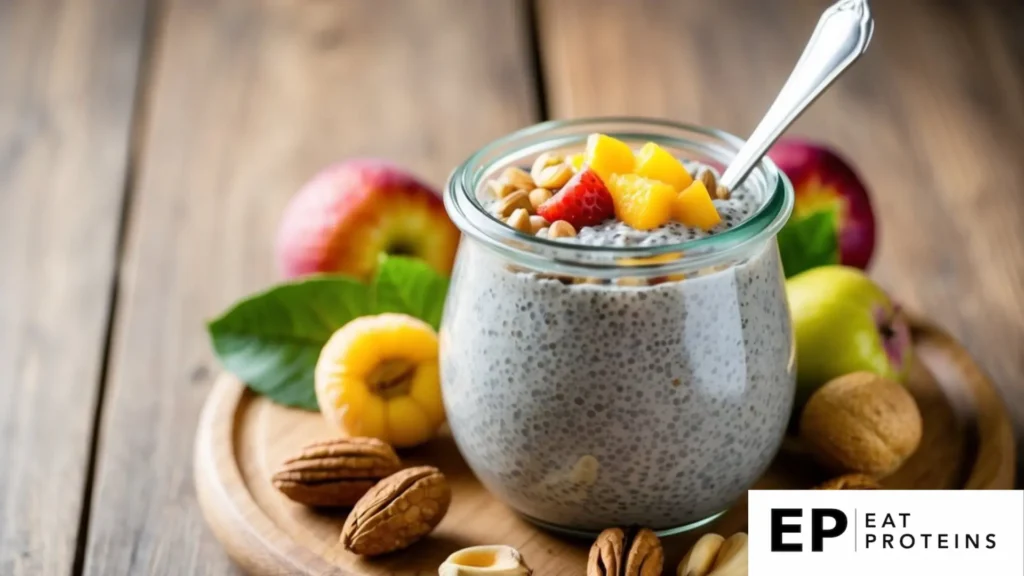
Chia seed pudding is a simple and nutritious dessert that’s perfect for a fatty liver diet. I love how easy it is to make and how versatile it can be.
Chia seeds are packed with omega-3 fatty acids, which are great for liver health. They also provide fiber and protein, making this pudding very filling.
To make chia seed pudding, I mix 1/4 cup of chia seeds with 1 cup of unsweetened almond milk. I add a teaspoon of vanilla extract and a tablespoon of honey for sweetness.
I stir the mixture well and let it sit in the fridge for at least 2 hours or overnight. The chia seeds absorb the liquid and create a pudding-like texture.
Before serving, I top the pudding with fresh berries or sliced almonds for extra flavor and nutrients. This recipe makes one serving, but it’s easy to double or triple for meal prep.
Chia seed pudding is a tasty way to support liver health as part of a balanced diet. It’s quick to prepare and can be customized to suit different tastes.
6. Garlic Spinach Stir-Fry

I find this dish to be a quick and easy option for those with fatty liver. It’s packed with nutrients and takes only about 10 minutes to prepare.
Garlic and spinach are both liver-friendly ingredients. Garlic has compounds that can help activate liver enzymes, while spinach provides essential vitamins and minerals.
To make this stir-fry, I start by heating 1 tablespoon of olive oil in a pan over medium heat. I add 3 minced garlic cloves and cook for 30 seconds until fragrant.
Next, I add 4 cups of fresh spinach leaves to the pan. I stir-fry for about 2-3 minutes until the spinach wilts and turns bright green.
I season the dish with a pinch of salt and pepper to taste. For added flavor, I sometimes squeeze a little lemon juice over the top before serving.
This simple stir-fry is not only tasty but also supports liver health. It’s a versatile side dish that pairs well with many main courses.
7. Roasted Beet Salad

Roasted beet salad is a tasty and nutritious dish that’s great for a fatty liver diet. Beets are packed with nutrients that support liver health.
I find this salad easy to make. It takes about 45 minutes total, with most of that time for roasting the beets.
To start, I preheat the oven to 400°F (200°C). I wash 4 medium beets and wrap them in foil. Then I roast them for 35-40 minutes until tender.
Once cooled, I peel and slice the beets. I arrange them on a plate with some mixed greens.
For the dressing, I mix 2 tablespoons olive oil, 1 tablespoon balsamic vinegar, and a pinch of salt and pepper.
I drizzle the dressing over the salad and sprinkle with 2 tablespoons of crumbled goat cheese and 1 tablespoon of chopped walnuts.
This salad is not only delicious but also supports a healthy liver. The beets help break down fat deposits, while the olive oil provides healthy fats.
8. Grilled Chicken with Broccoli

Grilled chicken with broccoli is a nutritious meal for fatty liver. I find it easy to make and packed with protein and fiber.
To prepare, I marinate 4 chicken breasts in olive oil, lemon juice, and herbs for 30 minutes. I preheat the grill to medium-high heat.
While the grill heats up, I steam 2 cups of broccoli florets for 5 minutes until crisp-tender.
I grill the chicken for 6-8 minutes per side until cooked through. The internal temperature should reach 165°F (74°C).
I serve the grilled chicken with the steamed broccoli on the side. This meal is low in fat and provides essential nutrients to support liver health.
For extra flavor, I sometimes add a sprinkle of black pepper or a squeeze of fresh lemon juice before serving. The combination of lean protein and vegetables makes this a satisfying and liver-friendly dish.
9. Sautéed Kale and Mushrooms
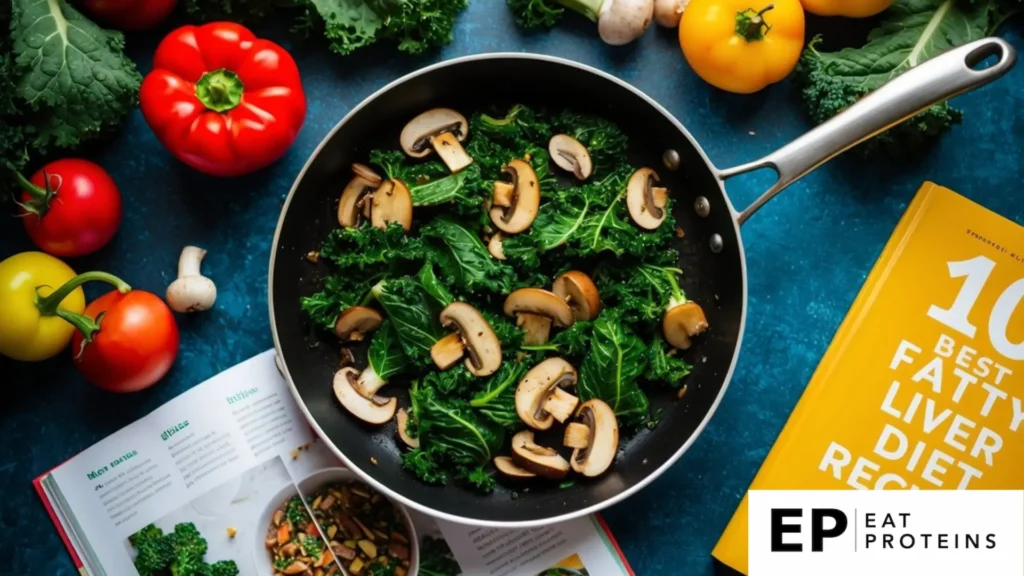
I love this simple yet nutritious dish for fatty liver health. Kale is packed with nutrients that support liver function.
This recipe is quick and easy to make. I can have it ready in about 15 minutes with just a few ingredients.
To start, I wash and chop 1 bunch of kale and slice 8 ounces of mushrooms. Then I heat 1 tablespoon of olive oil in a large skillet over medium heat.
Next, I add the mushrooms and cook for 4-5 minutes until lightly browned. I toss in the kale and sauté for about 10 minutes until it’s tender.
I season with a pinch of salt and pepper to taste. For extra flavor, I sometimes add minced garlic or a splash of lemon juice at the end.
This dish makes a great side or light meal. I find it filling and satisfying while being gentle on my liver.
10. Oven-Roasted Brussels Sprouts

Brussels sprouts are small, green, cabbage-like vegetables. They’re packed with nutrients and can be a great addition to a fatty liver diet.
I find oven-roasted Brussels sprouts easy to make. They take about 30 minutes from start to finish.
To prepare, I preheat the oven to 400°F (200°C). I trim and halve 1 pound of Brussels sprouts, then toss them with 2 tablespoons of olive oil and a pinch of salt and pepper.
Next, I spread the sprouts on a baking sheet in a single layer. I roast them for 20-25 minutes, shaking the pan halfway through.
The sprouts are done when they’re golden brown and crispy on the outside, tender on the inside. I like to add a squeeze of lemon juice before serving for extra flavor.
This simple recipe is low in fat and high in fiber, making it a good choice for those following a fatty liver diet. The roasting brings out the natural sweetness of the Brussels sprouts.
What To Know About Fatty Liver Disease?
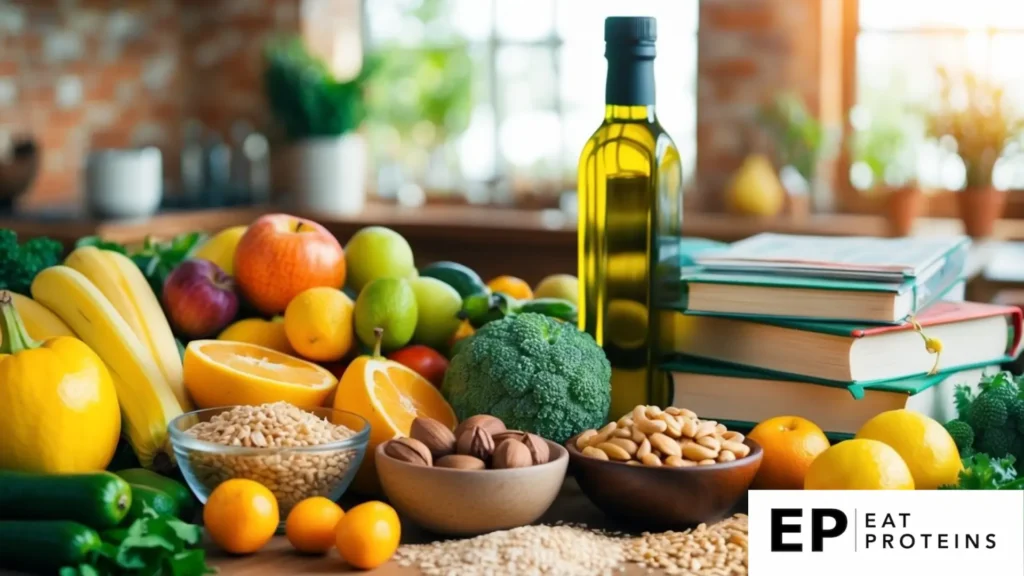
Fatty liver disease is a common condition that affects many people. It happens when fat builds up in the liver cells. This can lead to health problems if not addressed.
What Is Fatty Liver Disease?
Fatty liver disease occurs when more than 5% of the liver’s weight is fat. There are two main types:
- Alcoholic fatty liver disease (AFLD)
- Non-alcoholic fatty liver disease (NAFLD)
NAFLD is the most common type. It affects people who drink little or no alcohol. NAFLD can range from simple fatty liver to more serious forms. These include non-alcoholic steatohepatitis (NASH) and cirrhosis.
In simple fatty liver, fat builds up but doesn’t cause much harm. NASH involves inflammation and liver cell damage. Cirrhosis is severe scarring that can lead to liver failure.
What are the causes and risk factors of fatty liver disease?
Several factors can increase the risk of fatty liver disease:
- Obesity
- Type 2 diabetes
- High blood pressure
- High cholesterol
- Metabolic syndrome
Genetics also play a role. Some people are more likely to develop fatty liver due to their genes. Ethnic differences in NAFLD risk may be linked to genetic variations.
Diet is a key factor. Eating too many calories, especially from sugar and unhealthy fats, can lead to fat buildup in the liver. Lack of exercise and a sedentary lifestyle also contribute to the problem.
What are the symptoms and how is fatty liver disease diagnosed?
Fatty liver disease often has no symptoms in its early stages. As it progresses, some people may experience:
- Fatigue
- Pain in the upper right abdomen
- Enlarged liver
Doctors diagnose fatty liver through blood tests, imaging studies, and sometimes a liver biopsy. Blood tests check liver enzymes and other markers. Ultrasound, CT scans, or MRI can show fat in the liver.
A liver biopsy is the most accurate way to diagnose NASH and determine the severity of liver damage. But it’s not always needed. Understanding the disease helps people make better diet choices. This can slow or stop its progression.
How can essential dietary changes help with a fatty liver diet?

Changing your diet is key to managing fatty liver disease. I’ll cover the most important foods to eat and avoid, as well as how to include healthy fats in your meals.
What is the importance of a balanced diet for a fatty liver diet?
A balanced diet is crucial for fatty liver health. I recommend eating plenty of fruits, vegetables, whole grains, and lean proteins. These foods provide essential nutrients and help reduce liver fat.
Eating smaller meals throughout the day can be helpful. I suggest aiming for 3-5 small meals instead of 3 large ones.
Fiber is very important. I advise getting at least 25-30 grams daily from foods like:
- Oats
- Beans
- Berries
- Broccoli
- Apples
Staying hydrated is also key. I recommend drinking 8-10 glasses of water per day to help flush toxins from your liver.
What foods should be avoided in a fatty liver diet?
Cutting out certain foods can make a big difference for your liver. I strongly advise avoiding:
- Sugary drinks and sweets
- Fried foods
- Processed meats
- White bread and pasta
- Alcohol
These foods can increase fat buildup in your liver. Even small amounts of alcohol can be harmful, so it’s best to avoid it completely.
Limiting salt is also important. I suggest keeping your daily sodium intake under 2,300 mg. Reading food labels can help you track this.
How can you incorporate healthy fats into a fatty liver diet?
Not all fats are bad for fatty liver. I recommend including healthy fats in your diet. Good sources include:
- Avocados
- Olive oil
- Nuts and seeds
- Fatty fish like salmon
These foods contain omega-3 fatty acids and other nutrients that can help reduce liver inflammation.
I advise using olive oil for cooking and dressings. It’s rich in antioxidants that support liver health.
Eating fatty fish 2-3 times per week can be very beneficial. If you don’t eat fish, consider taking a fish oil supplement after talking to your doctor.
Remember to control portion sizes, even with healthy fats. They’re high in calories, so a little goes a long way.
What additional tips are useful for managing a fatty liver diet?

Managing fatty liver goes beyond diet. Regular exercise, medical check-ups, and stress control play key roles in improving liver health. These habits can help reduce fat buildup and boost overall wellness.
How does physical activity support a fatty liver diet?
I recommend getting at least 150 minutes of moderate exercise each week. This can include brisk walking, swimming, or cycling. Exercise helps burn excess fat and improves insulin sensitivity.
Strength training is also important. I suggest doing resistance exercises 2-3 times per week. This builds muscle mass and boosts metabolism.
Start slow if you’re new to working out. Even 10-minute sessions a few times a day can make a difference. Gradually increase intensity and duration as your fitness improves.
Regular physical activity is crucial for managing fatty liver. It reduces liver fat and inflammation. Aim to be active most days of the week for the best results.
How often should you monitor and have check-ups for a fatty liver diet?
I advise scheduling check-ups with your doctor every 6-12 months. These visits help track your liver health and catch any issues early.
Your doctor may order blood tests to check liver enzymes. They might also suggest imaging tests like ultrasounds or MRIs to monitor liver fat levels.
Keep a record of your test results. This helps you and your doctor spot trends over time. Don’t skip appointments, even if you feel fine.
Be honest about your diet and lifestyle habits during check-ups. This information helps your doctor give you the best care possible.
How can stress management improve a fatty liver diet?
Chronic stress can worsen fatty liver disease. I recommend finding effective ways to relax and unwind daily.
Try deep breathing exercises or meditation. Even 5-10 minutes a day can help lower stress levels. Yoga is another great option that combines physical activity with relaxation.
Get enough sleep each night. Aim for 7-9 hours of quality rest. Poor sleep can increase stress and affect liver health.
Make time for hobbies and activities you enjoy. This can be reading, gardening, or spending time with loved ones. Fun activities help reduce stress and improve overall well-being.
Limit caffeine and alcohol intake. These can disrupt sleep and increase stress. Instead, try herbal teas or water with lemon for a soothing drink option.
